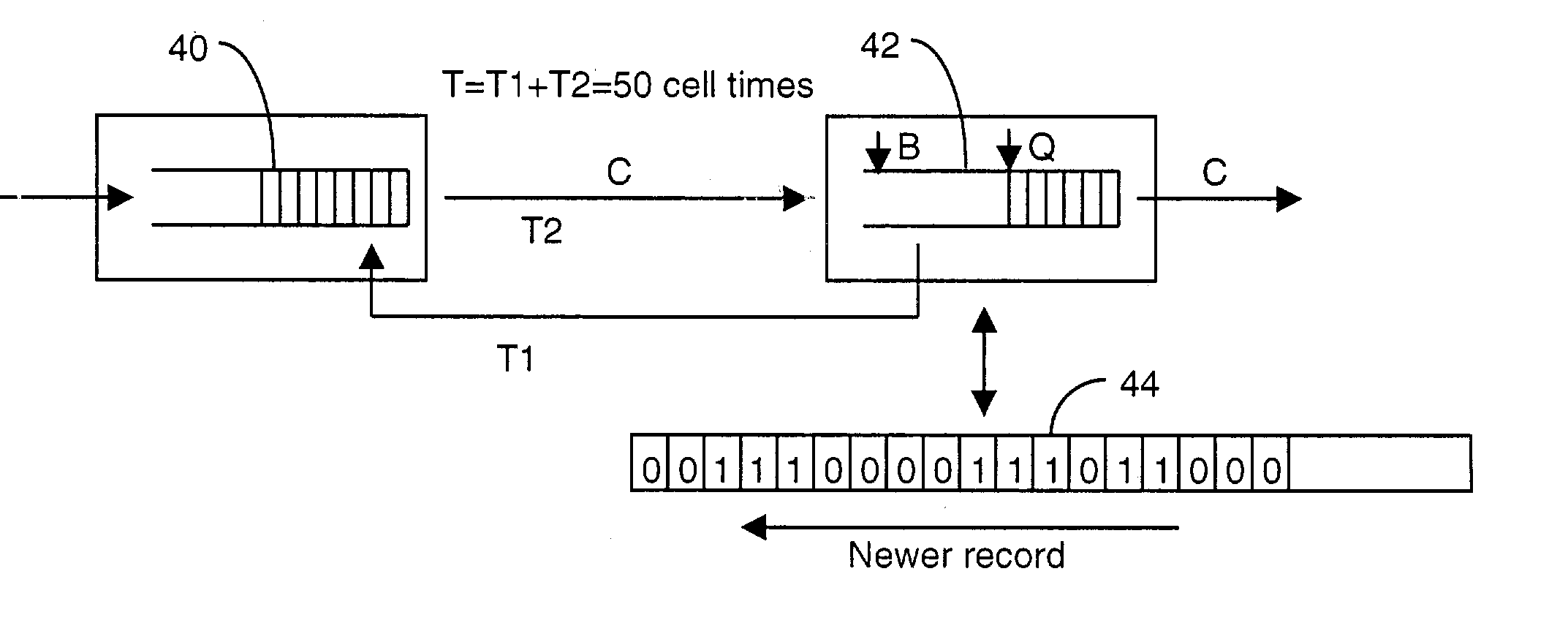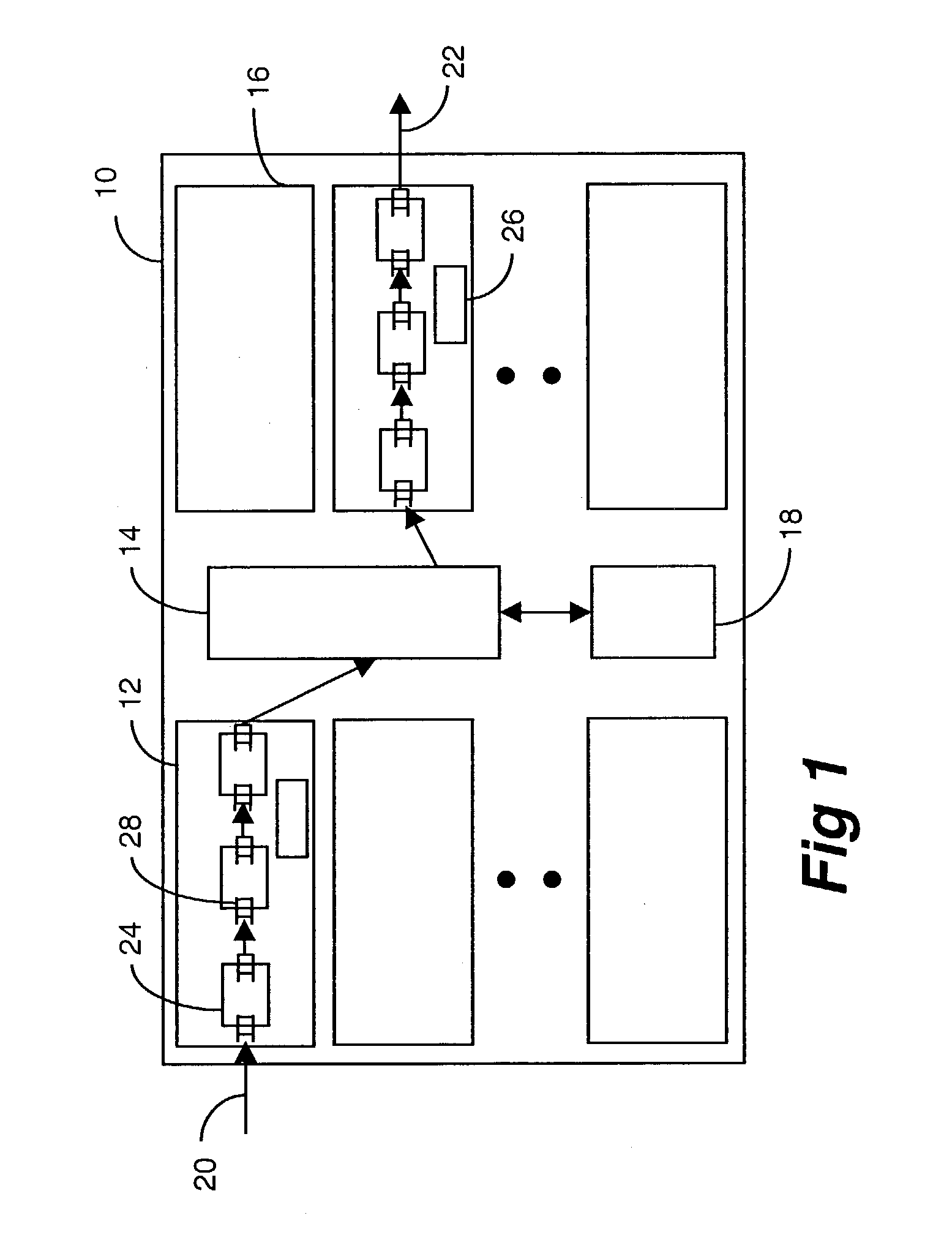Backpressure history mechanism in flow control
a flow control and history technology, applied in the field of backpressure history mechanism in flow control, can solve the problem of large number of queues in the second stage device, and achieve the effect of reducing the amount of traffic, reducing the number of queues needed, and saving queue spa
- Summary
- Abstract
- Description
- Claims
- Application Information
AI Technical Summary
Benefits of technology
Problems solved by technology
Method used
Image
Examples
Embodiment Construction
[0039] FIG. 3 shows the invention according to one embodiment. It shows a similar arrangement of queues as those of FIG. 2. It is assumed to have the same parameters as those discussed in connection with FIG. 2. In FIG. 3, first stage queue 40 and second stage queue 42 are shown in which the second stage queue 42 maintains a history list 44 of the backpressure flow control signals. It should be understood that in practice, there are multiple second stage queues and therefore each second stage queue maintains its history list of control signals which are sent to the first stage device. The history list represents a record of the flow control signals over the most recent round trip time T. The units of the history list are some convenient measure of time (e.g. in an ATM cell flow, a single time unit could be the time required to transmit one cell).
[0040] Let Tg represent the total amount of time over the last T that the flow control backpressure signal was in the Go state. Q represent...
PUM
 Login to View More
Login to View More Abstract
Description
Claims
Application Information
 Login to View More
Login to View More - R&D
- Intellectual Property
- Life Sciences
- Materials
- Tech Scout
- Unparalleled Data Quality
- Higher Quality Content
- 60% Fewer Hallucinations
Browse by: Latest US Patents, China's latest patents, Technical Efficacy Thesaurus, Application Domain, Technology Topic, Popular Technical Reports.
© 2025 PatSnap. All rights reserved.Legal|Privacy policy|Modern Slavery Act Transparency Statement|Sitemap|About US| Contact US: help@patsnap.com



